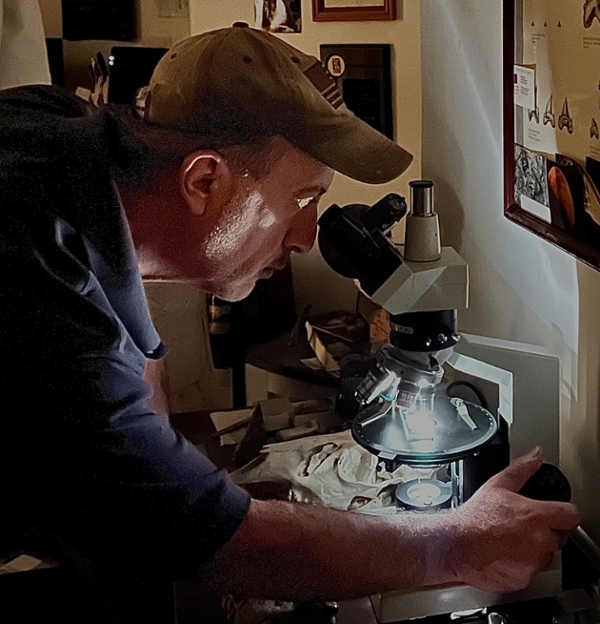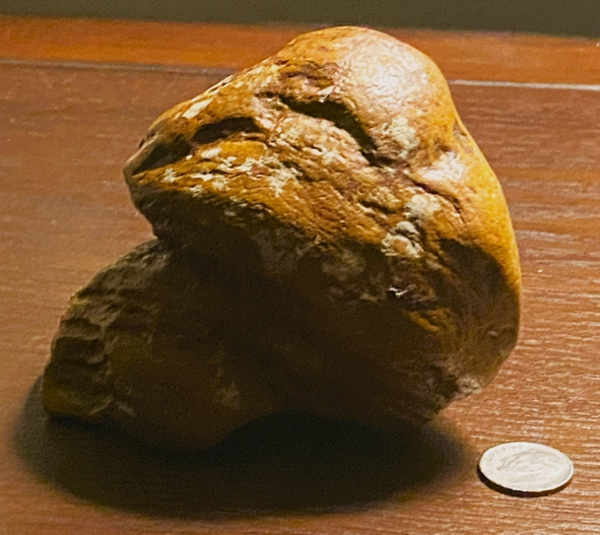Rare dinosaur dropping may reveal details on diet and lifestyle of extinct species
Rare dinosaur dropping may reveal details on diet and lifestyle of extinct species
Fossilized excrement from the Cretaceous Period, possibly the first known sample from an East Coast dinosaur, may soon reveal secrets about how the extinct animal lived.
Forensic geologist Dr. John Anton, who teaches in Rowan University’s School of Earth & Environment, said the sample of coprolite, or fossilized feces, a friend discovered in Burlington County may tell researchers as much or more about how the animal it came from lived than a reconstruction of its bones ever could.
“The sample is pretty large, about 500 grams, the size of a small grapefruit,” Anton said. “I knew as soon as I saw it that it was a dinosaur coprolite.”
Anton, who described the sample as “very flora rich,” said it likely came from a plant eater. He surmised by the sample’s size and location that the animal may have been a hadrosaur, a dinosaur of the late Cretaceous Period that was common in the area that eventually became New Jersey.
Since acquiring the sample from a friend last year, Anton said he ran several tests, including x-rays and a CT scan, to determine the coprolite’s composition and origin.
“It appears devoid of bone, which tells me it was from an herbivore, such as a duckbilled dinosaur,” Anton said. “They had multiple rows of teeth, but they were compact. They would nip vegetation, grind down the food and swallow it.”
Anton said ancient shark coprolite is common in New Jersey but, until now, there have been no confirmed findings of dinosaur droppings in the state, and maybe all of the East Coast.
Working with the United States Geological Survey, he hopes to run samples through an electron microscope as his investigation of the sample continues.
“We may also run a carbon isotope analysis, for perspective on the ancient climate,” he said. “I’d be looking for a carbon isotope signature, which would tell us more about what the animal was eating.”
Ultimately, Anton said, trace fossils contained in the sample may also reveal information about regional plants and herbs of the period as well as about the animals that ate them.
“It’s like a time capsule,” he said. “The material must have been buried very quickly and hardened so that the bacteria did not break it down rapidly. I suspect that it was buried quickly and lithified, turned to rock, and that minimized decomposition.”

